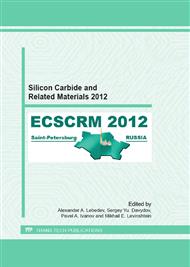p.851
p.855
p.859
p.865
p.869
p.873
p.877
p.881
p.887
SiC High Power Devices – Challenges for Assembly and Thermal Management
Abstract:
Silicon carbide power devices are intended and to enter new application regimes in power electronics, in fact, they are enabling components mainly if higher switching frequencies in power electronics are considered. This trend can be clearly observed since power density can be increased and efforts towards passive components and other mechanical contributions to the system can be reduced. However, this trend imposes new challenges towards the surrounding of the chips in form of the package itself and the whole system around. Stray components like inductances and impedance elements become crucial elements in the whole circuit what results in the fact that a simple exchange of silicon chips by silicon carbide in a given package can be ruled out. In addition different considerations regarding the thermal design especially in power modules arise when SiC chips are considered, triggered by the fact that the cost balance between assembly and chip is shifted compared to silicon based solutions. Thus, different optimization criteria can be used, leading to new design approaches for power modules. The following paper will give a first inside how those boundary conditions can be implemented in innovative solutions using SiC components.
Info:
Periodical:
Pages:
869-872
Citation:
Online since:
January 2013
Authors:
Keywords:
Price:
Сopyright:
© 2013 Trans Tech Publications Ltd. All Rights Reserved
Share:
Citation:


